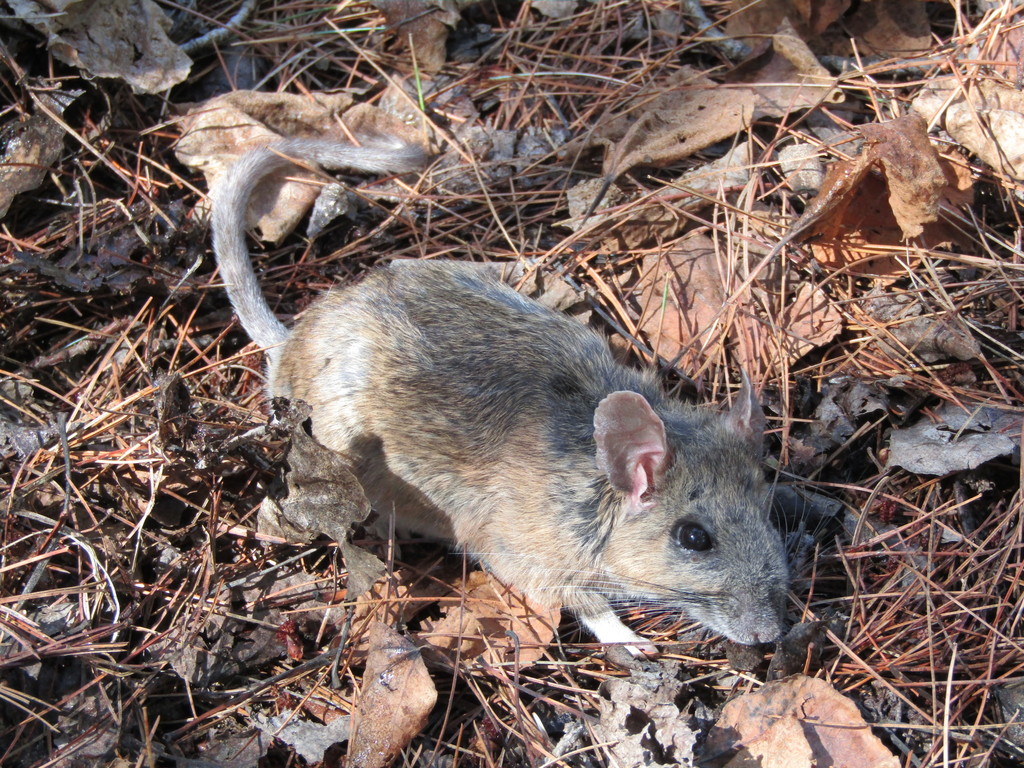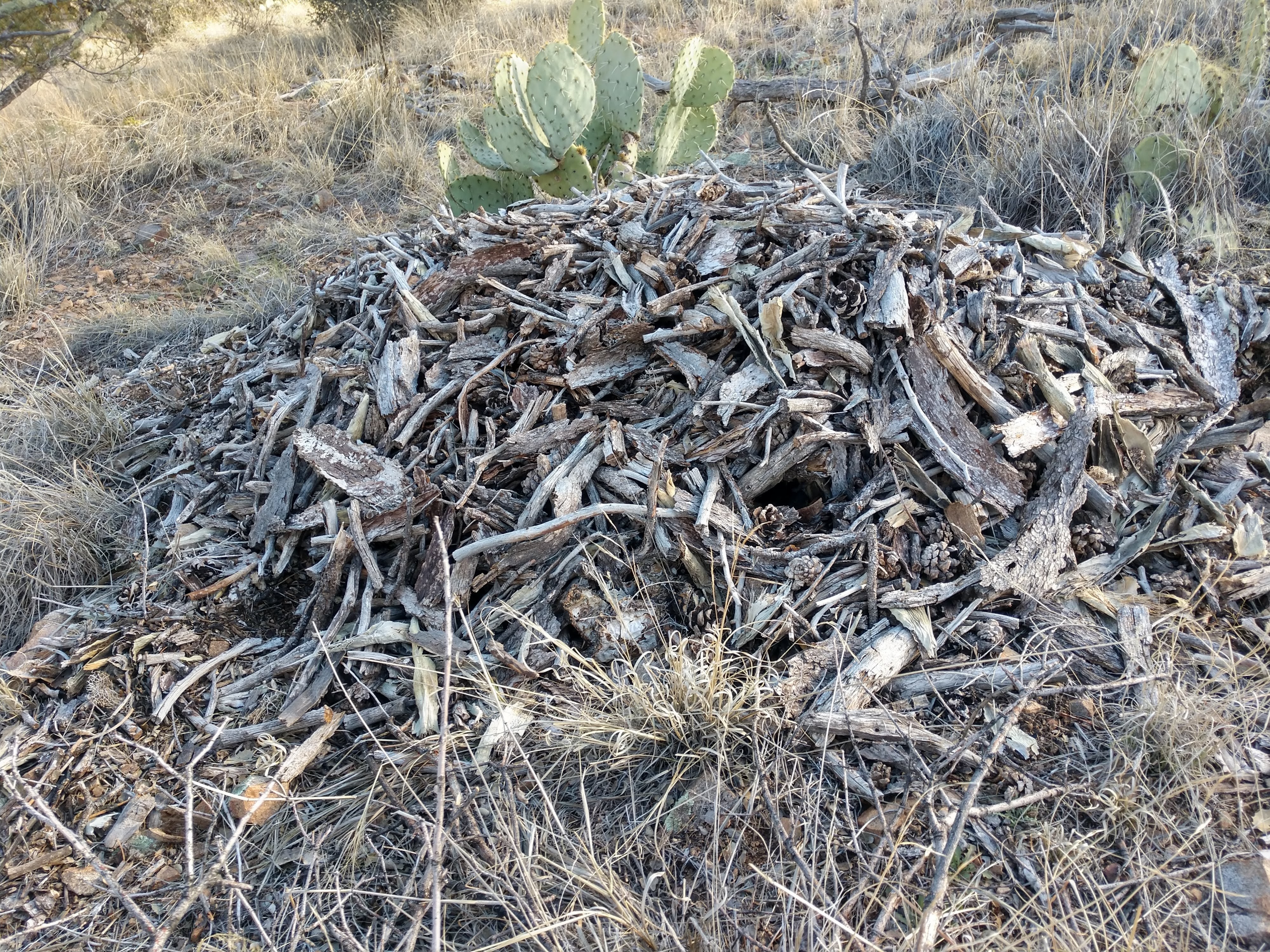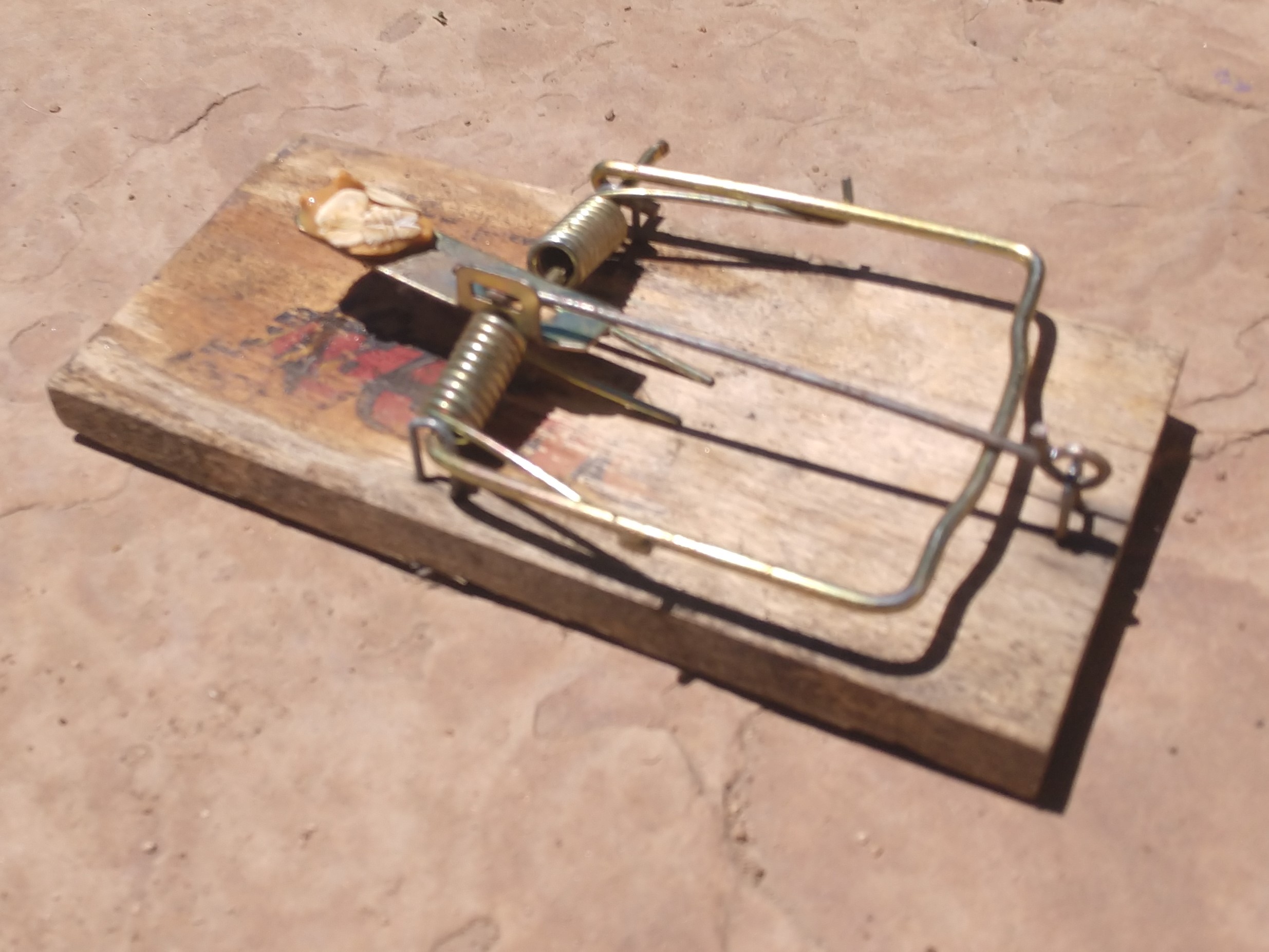 Woodrats Cause Mischief - June 2, 2021 Jeff Schalau, Agent, Agriculture & Natural Resources University of Arizona Cooperative Extension, Yavapai County Woodrats are ubiquitous in the highlands of Arizona and many other parts of the U.S. The woodrat can be distinguished from other rats by its fur covered tail and whitish underbelly and feet. They are relatively large rodents with large eyes and ears. Three woodrat species can be found in central Arizona: the white-throated woodrat, Mexican woodrat, and Stephen’s woodrat. These nocturnal rodents are best known for their attraction to shiny, interesting objects. When they encounter a cartridge casing, coin, or article of jewelry, they will carry it until they encounter another, more interesting object leaving behind the old and departing with the new. This behavior also earned them the names “packrat” and "trade rat." Woodrats are most common in pinyon/juniper, chaparral, and desert scrub plant communities. Their nests are often conspicuous and constructed out of sticks, cactus, and other organic debris. Most often, they are built at the base of a tree or shrub, center of a prickly pear cactus, or small cave. However, they can also build nests in attics, garages, rock overhangs, underneath houses or in the engine compartments of seldom-driven cars. These nests can be occupied over many generations and in some cases up to a thousand years. Within the woodrat nest is the midden: a central living and food storage area. These middens have accumulated layers of urine and feces. In these layers, paleoecologists study long-term changes in plant communities by identifying pollen types and other plant debris found in the midden. Their diet varies from cactus, juniper berries, acorns, and pinyon nuts to leaves, plant shoots, flowers, vegetables, and fruit. These latter dietary preferences usually introduce urban dwellers to woodrats. They also like to gnaw on the vinyl or plastic shielding of electrical wires and are notorious for chewing wiring of cars and appliances. Cooperative Extension receives many calls each year about these home and garden visitors. A few of the woodrat calls in recent memory are: pansy flowers being nipped off every morning and ripe tomatoes being mysteriously transported to odd areas. My recently planted kale patch has attracted the local woodrats which ate 17/18 of the transplants. I have caught four adults in one week. Woodrats are not legally protected in Arizona, so homeowners can implement control measures without first contacting wildlife officials. Exclusion and barriers are the most effective management methods if woodrats are entering structures. Cracks and openings in buildings, including those at attic level, must be sealed. Like a mouse, if they can fit their head through an opening, they may be able to squeeze their body through too. If the hole is in wood or other soft material, they may chew it larger to gain access. Smooth sheet metal barriers at least two feet tall can be effective at preventing damage in gardens or individual plants. Where significant economic damage is occurring, lethal trapping may be warranted. Rat-sized snap traps can be baited with nuts, bacon rind, peanut butter, oatmeal, raisins, other dried fruit, or biscuits. Live traps will also work but releasing animals in another area is not recommended. Studies have shown that animals released into new areas often die from exposure, predation, or competition with resident animals. Some companies sell LED lights that flash periodically to deter rat from getting too comfortable. A repellent product has balsam fir oil which also seems to be effective. Keep in mind that trapping by itself is not a long-term solution. You should remove attractants if possible. Destruction of nests may also be necessary depending on proximity to structures and/or the extent of damage being observed. Here, the nest should be soaked with an antibacterial/antiviral disinfectant before disturbing. Hantavirus and other zoonotic diseases can be present in woodrat nests. Never handle dead or dying woodrats with your bare hands – use disposable gloves and wash hands after handling. Finally, it should be said that all native animals (including birds and insects) were here before we were. We should try to be good neighbors and respect their presence whenever possible. Lethal control of woodrats should only be used after prevention strategies have been considered. See below for additional information and photos. You can follow the Backyard Gardener on Twitter – use the link on the BYG website. If you have other gardening questions, email the Master Gardener Help Desk in Prescott (prescottmg@gmail.com) or Camp Verde (verdevalleymg@gmail.com) and be sure to include your name, location, and phone number. Find past Backyard Gardener columns or provide feedback at the Backyard Gardener web site: https://cals.arizona.edu/yavapai/anr/hort/byg/. Images  Woodrats (Neotoma spp.) are common across the deserts and highlands of Arizona. They have large ears and eyes with a furry tail and white underbelly (photo from: inaturalist.ca).
Woodrats (Neotoma spp.) are common across the deserts and highlands of Arizona. They have large ears and eyes with a furry tail and white underbelly (photo from: inaturalist.ca).  Woodrat nest constructed using coarse woody debris near Prescott, Arizona (Photo by Jeff Schalau, University of Arizona).
Woodrat nest constructed using coarse woody debris near Prescott, Arizona (Photo by Jeff Schalau, University of Arizona). Woodrats also nest under the hoods of infrequently driven cars (unknown source).
Woodrats also nest under the hoods of infrequently driven cars (unknown source). Rat-sized snap traps can be used to humanely manage unwanted woodrats. Trapping should be done in conjunction with other management strategies such as habitat modification and exclusion (Photo by Jeff Schalau, University of Arizona).
Rat-sized snap traps can be used to humanely manage unwanted woodrats. Trapping should be done in conjunction with other management strategies such as habitat modification and exclusion (Photo by Jeff Schalau, University of Arizona).Additional Resources Woodrats, National eXtension Website Note: Before applying recommended strategies, make sure the practices are legal in your state. wildlife-damage-management.extension.org/woodrats/ Woodrats, Colorado State University Extension sam.extension.colostate.edu/wp-content/uploads/sites/31/2018/12/Woodrat-Article-for-the-Courier.pdf |